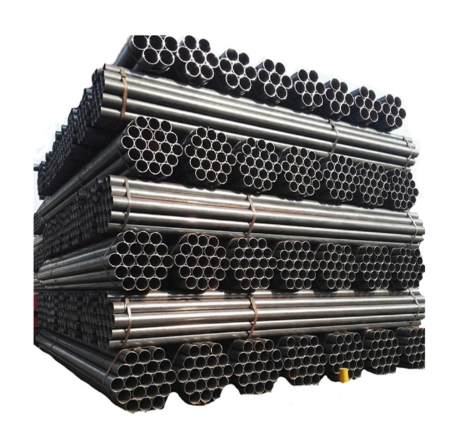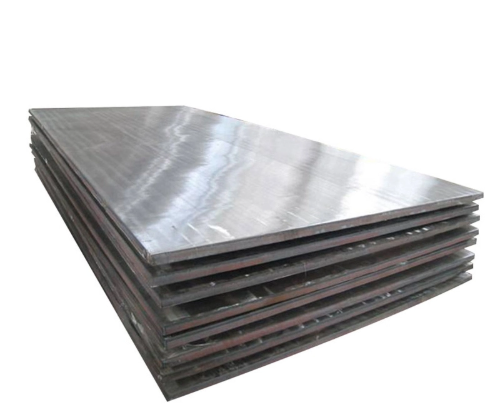Views: 0 Author: Site Editor Publish Time: 2025-09-10 Origin: Site








In the world of manufacturing and construction, choosing the right material is crucial for the success and longevity of any project. Two of the most commonly used materials are carbon steel and alloy steel. Both offer unique properties and benefits, making them suitable for a wide range of applications. Whether you’re building a skyscraper, manufacturing automotive parts, or creating intricate machinery, understanding the differences between carbon steel and alloy steel can help you make the best decision for your specific needs. In this comprehensive guide, we will delve into the characteristics, applications, and key differences between these two types of steel, providing you with the information you need to choose the right material for your project.
Alloy steel is a type of steel that combines iron with other elements like silicon, chromium, and nickel. These elements enhance the steel’s strength, toughness, and resistance to wear and corrosion. For example, chromium boosts toughness and wear resistance, while nickel increases strength and corrosion resistance.
Alloy steels come in two main types: high-alloy and low-alloy. High-alloy steels have a higher percentage of alloying elements, often over 5%. Stainless steel, a popular high-alloy steel, contains up to 12% chromium, which forms a protective oxide layer that resists corrosion. Low-alloy steels, containing 1% to 5% alloying elements, are more cost-effective and used in applications like large-diameter flanges and seamless rolled rings.
Alloy steel is incredibly versatile and used in many industries. In the construction industry, it’s used for structural components like girders and beams. The aerospace industry relies on alloy steel for aircraft parts due to its high strength and resistance to extreme conditions. It’s also used in automotive manufacturing for parts that need to withstand high stress and wear, such as gears and axles.
Carbon steel is a straightforward alloy of iron and carbon. It’s known for its durability and versatility. The carbon content can vary, which affects the steel’s properties. Low-carbon steel, with less than 0.25% carbon, is soft and easy to work with, making it ideal for welding and machining. Medium-carbon steel, with 0.25% to 0.6% carbon, is stronger but less ductile. High-carbon steel, with 0.6% to 1.25% carbon, is very hard and wear-resistant, often used for springs and cutting tools.
Low-Carbon Steel: Contains less than 0.25% carbon. It’s soft, ductile, and easy to weld, making it perfect for applications like car bodies and food cans.
Medium-Carbon Steel: With 0.25% to 0.6% carbon, it’s stronger and can be heat-treated to improve its mechanical properties. It’s used in parts like gears and crankshafts.
High-Carbon Steel: Contains 0.6% to 1.25% carbon. It’s very hard and wear-resistant, used in springs, wires, and cutting tools.
Carbon steel is widely used due to its versatility and cost-effectiveness. In shipbuilding, it’s used for hulls and structural components. In the construction industry, it’s used for pipes, pressure vessels, and reinforcing bars. The petrochemical and oil & gas sectors also rely on carbon steel for its durability and resistance to harsh conditions.

Alloy steel is a blend of iron and a variety of other elements such as chromium, nickel, molybdenum, and silicon. These additional elements significantly enhance the steel’s properties, making it more durable and resistant to wear and corrosion. In contrast, carbon steel is primarily composed of iron and carbon, with minimal other elements. The simplicity of carbon steel’s composition makes it more affordable but less versatile in terms of specialized properties.
Alloy steel generally boasts higher tensile strength compared to carbon steel. This superior strength is crucial for applications requiring high durability, such as aircraft parts and heavy machinery. Carbon steel, while still strong, is more cost-effective and easier to fabricate, making it ideal for projects where budget and ease of manufacturing are key considerations.
Carbon steel is typically harder than alloy steel, especially in its high-carbon form. This hardness makes carbon steel perfect for applications like cutting tools and springs, where a high level of hardness is required. However, this increased hardness comes at the cost of reduced ductility, making carbon steel more brittle and challenging to work with.
Alloy steel’s corrosion resistance is significantly better due to the presence of elements like chromium, which forms a protective oxide layer on the surface. This makes alloy steel ideal for environments where exposure to moisture or chemicals is a concern. Carbon steel, lacking these protective elements, is more susceptible to rust and corrosion, requiring additional protective measures like coatings or paints.
Carbon steel is more malleable than alloy steel, allowing it to be easily shaped and formed. This property is particularly useful in manufacturing processes that involve bending or rolling the steel, such as in the production of car bodies or construction components.
Carbon steel is generally easier to weld than alloy steel. The absence of additional alloying elements in carbon steel reduces the risk of cracking during the welding process. Alloy steel, with its complex composition, often requires specialized techniques and careful control of welding parameters to avoid defects.
Alloy steel is more ductile than carbon steel, meaning it can deform without breaking. This property is essential in applications where the steel needs to withstand bending or stretching forces, such as in automotive parts or structural components.
Alloy steel is typically more expensive than carbon steel due to the additional alloying elements and the more complex manufacturing processes involved. The cost of carbon steel varies based on its carbon content, with higher carbon content generally resulting in higher prices. However, carbon steel remains a cost-effective choice for many applications.
| Property | Alloy Steel | Carbon Steel |
|---|---|---|
| Chemical Composition | Contains additional elements like chromium, nickel, and molybdenum | Primarily composed of iron and carbon |
| Strength | Higher tensile strength | Lower tensile strength |
| Hardness | Lower hardness | Higher hardness |
| Corrosion Resistance | Excellent | Poor |
| Malleability | Lower malleability | Higher malleability |
| Weldability | More challenging to weld | Easier to weld |
| Ductility | Higher ductility | Lower ductility |
| Cost | More expensive | Less expensive |

When selecting the right steel for your project, several key factors should be taken into account to ensure the best possible outcome.
Strength: Determine the level of strength needed for your application. If high tensile strength is crucial, alloy steel might be the better choice.
Durability: Consider the durability required. Alloy steel’s enhanced properties make it suitable for long-term, high-stress applications.
Corrosion Resistance: Assess the environment in which the steel will be used. If exposure to moisture or chemicals is a concern, alloy steel’s superior corrosion resistance is advantageous.
Cost: Evaluate your budget. Carbon steel is generally more cost-effective, making it a popular choice for projects where budget is a significant factor.
Value for Money: While alloy steel is more expensive, it may offer long-term savings due to its durability and reduced maintenance needs.
Welding: If welding is a key part of your manufacturing process, carbon steel’s superior weldability might be a deciding factor.
Machining: Consider the ease of machining. Alloy steel’s hardness and strength can make it more challenging to machine compared to carbon steel.
The choice between alloy steel and carbon steel depends on your project’s specific needs. Alloy steel is better for applications requiring high strength, corrosion resistance, and durability. Carbon steel is more cost-effective and easier to work with, making it suitable for a wide range of general applications.
Alloy steel generally has higher tensile strength compared to carbon steel. This makes it suitable for applications where high strength is crucial, such as in aircraft parts and heavy machinery. However, carbon steel can also be very strong, especially in its high-carbon form, but it is less ductile and more challenging to work with.
No, alloy steel and carbon steel are different. Carbon steel is primarily composed of iron and carbon, with minimal other elements. Alloy steel contains additional elements like chromium, nickel, and molybdenum, which enhance its properties, making it stronger, more durable, and more resistant to corrosion.
Fabricators should consider the specific requirements of their project, including strength, durability, corrosion resistance, budget constraints, and manufacturing processes. Consulting with experts and conducting material testing can help determine the most suitable steel type for a given application.
In summary, both alloy steel and carbon steel offer unique advantages and are suited to different applications. Alloy steel provides superior strength, corrosion resistance, and durability, making it ideal for high-performance applications. Carbon steel, however, is more cost-effective, easier to weld, and suitable for a wide range of general applications.
When selecting the right steel for your project, it’s crucial to carefully consider your specific requirements, budget constraints, and manufacturing processes. Consulting with experts can provide valuable insights and help you make an informed decision.
If you’re looking for a reliable partner to supply high-quality steel, consider Zhongrun Steel (Foshan) Co., Ltd. With years of experience in the steel industry, Zhongrun Steel offers a wide range of both alloy and carbon steel products. Their commitment to quality and customer satisfaction ensures that you get the best materials for your project. Whether you need steel for construction, automotive, or any other industry, Zhongrun Steel can provide the right solution for you.